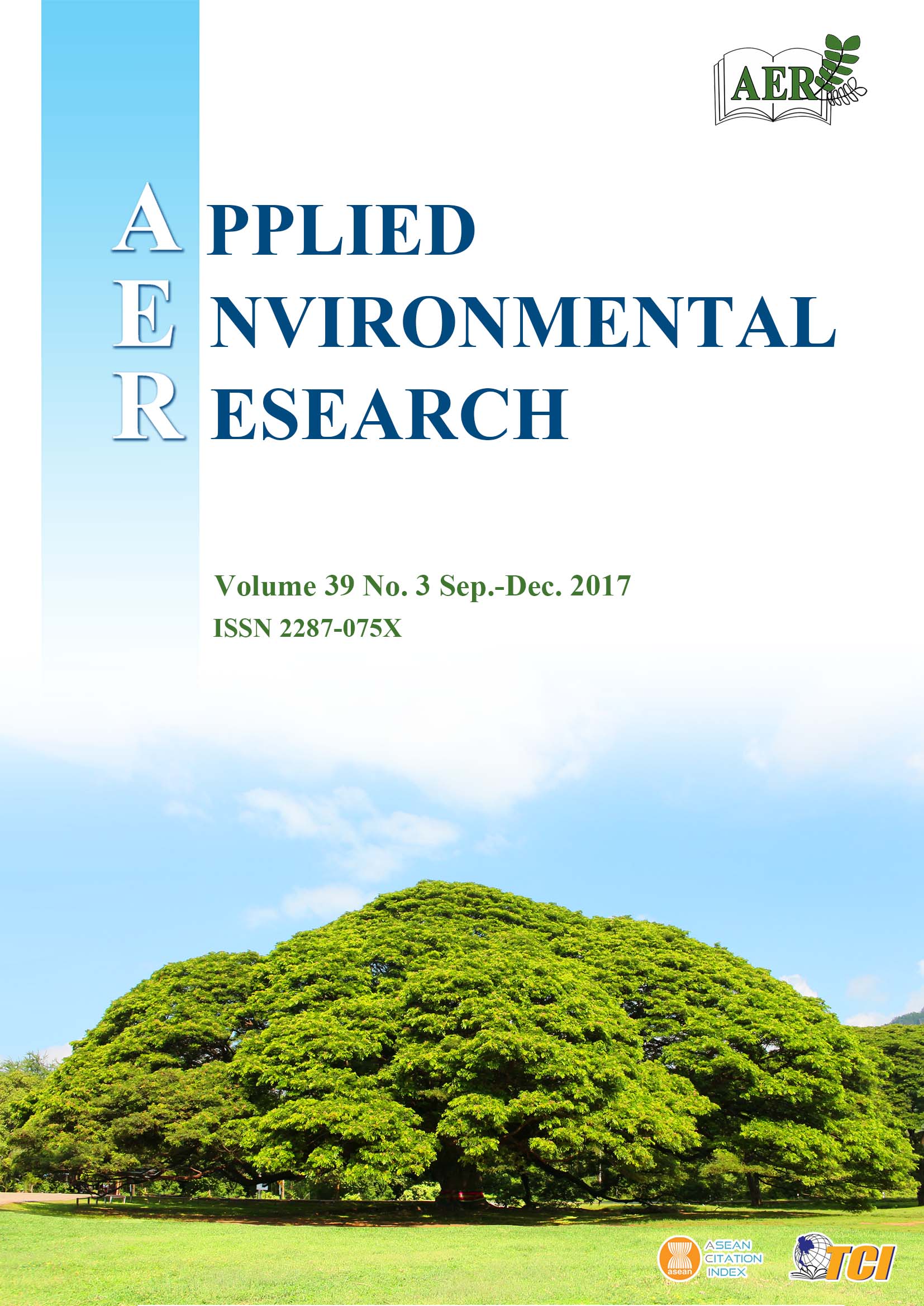Preliminary Feasibility of Using Natural Wetland for University Wastewater Treatment: A Case Study
Main Article Content
Abstract
Wetlands contribute to water quality improvement and play an important role in the global carbon cycle. As such, wetlands can sequester carbon and mitigate greenhouse gas emissions. This study utilized a survey as a preliminary investigation of the feasibility of using natural wetlands for university wastewater treatment. A total of 13 natural ponds containing water from rainfall and some discharge from the Rotating Batch Contractor (RBC) in Mae Fah Luang University (MFU) were selected. Of all the 13 ponds, the pond at the stadium was selected as the most suitable, due to the following physical and chemical parameters: slope was < 5%, maximum depth was 3.1 m, mean temperature of 24.5 °C, dissolved oxygen 6.31 mg L-1, pH 7.56, TDS 180 ppt, electrical conductivity 253 µS cm-1, and containing 2.35 % organic matter. Total cost and carbon emissions were compared between RBC and the proposed natural wetland. Construction, operation and maintenance costs of natural wetland were very low compared with RBC due to no chemical, electricity and skilled staff required. Similarly, the lower electrical consumption of the natural wetland resulted in reduced carbon emissions of 102.9 kg CO2eq per year. This preliminary result can be used to select possible options for university wastewater treatment.
Article Details

This work is licensed under a Creative Commons Attribution-NonCommercial 4.0 International License.
Published articles are under the copyright of the Applied Environmental Research effective when the article is accepted for publication thus granting Applied Environmental Research all rights for the work so that both parties may be protected from the consequences of unauthorized use. Partially or totally publication of an article elsewhere is possible only after the consent from the editors.

